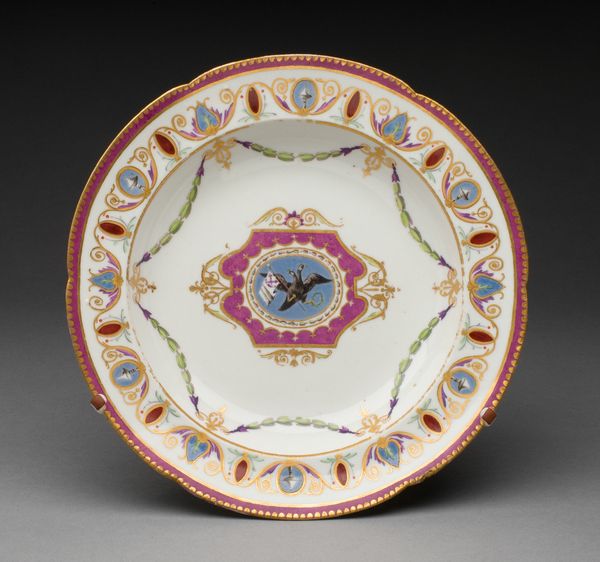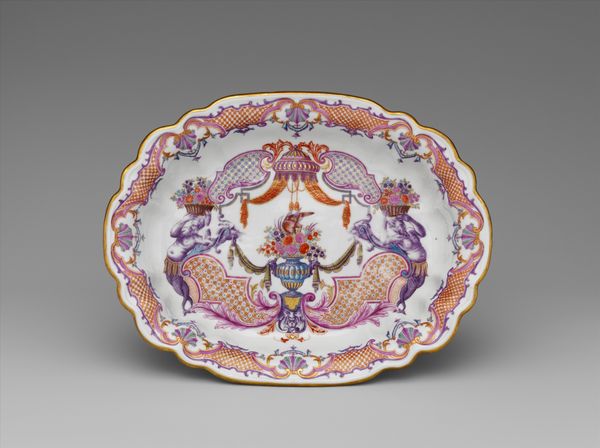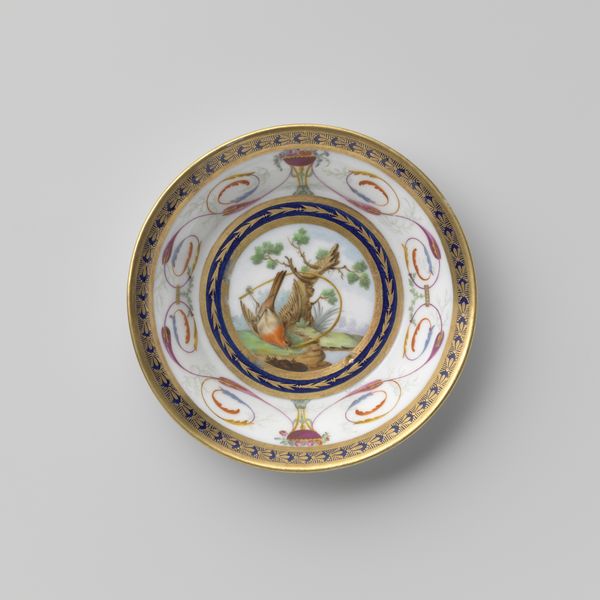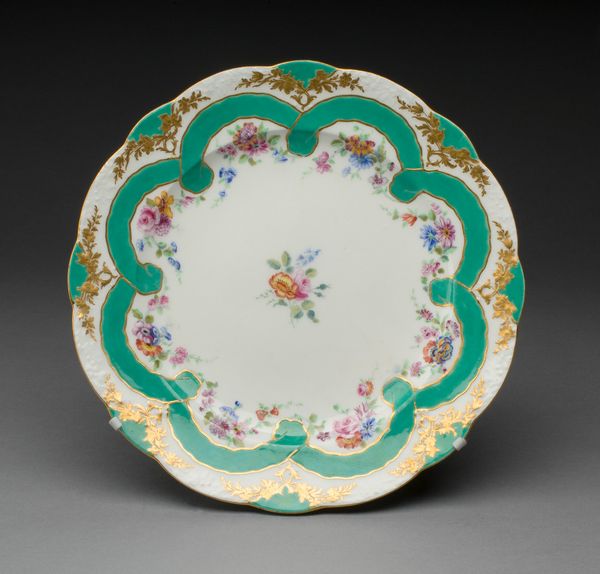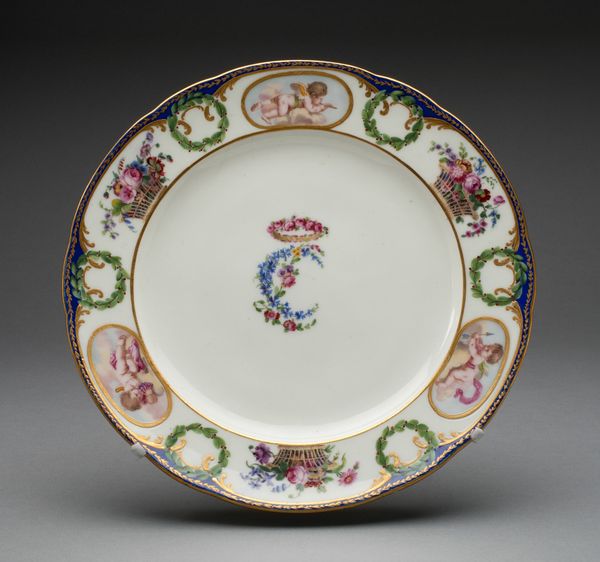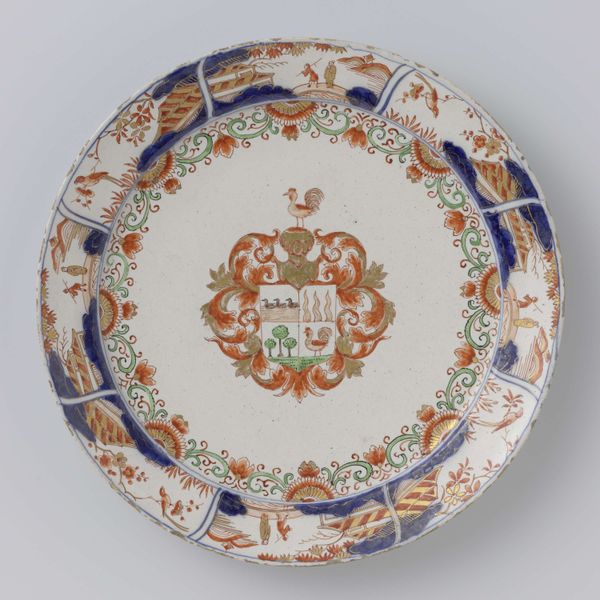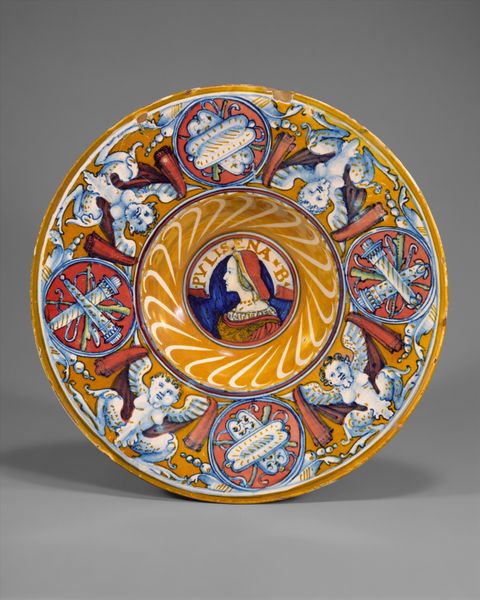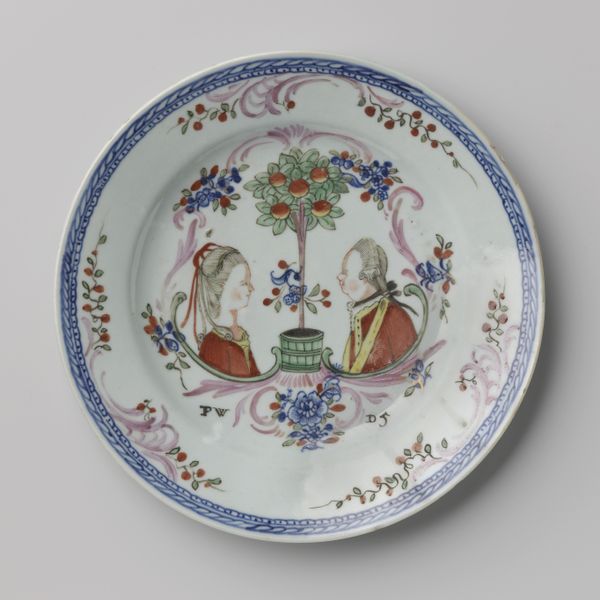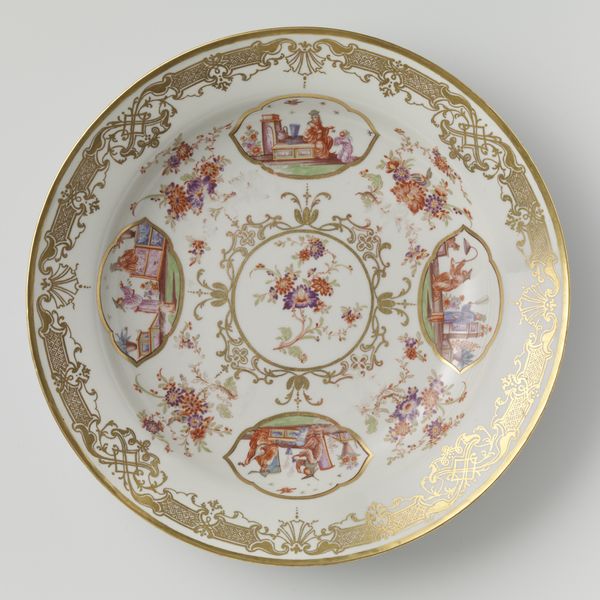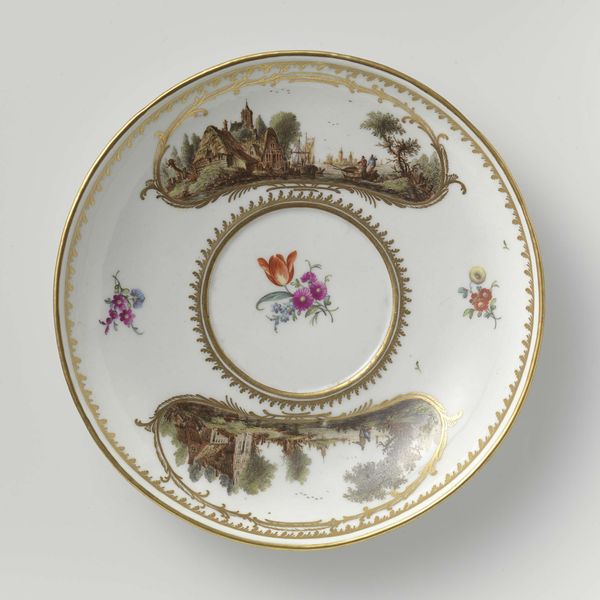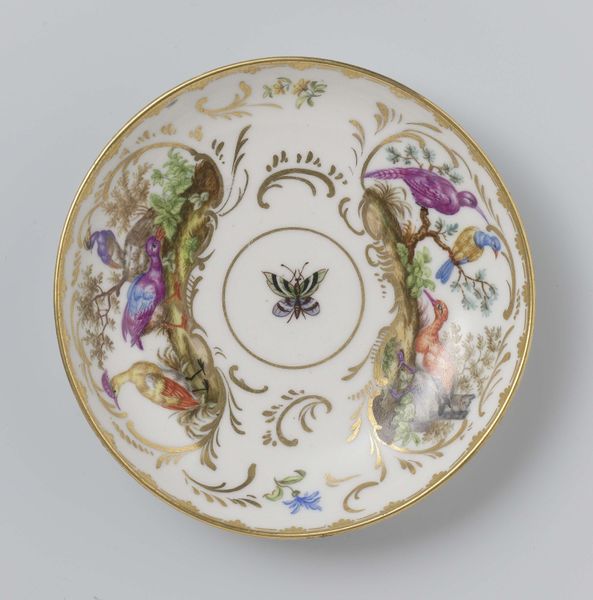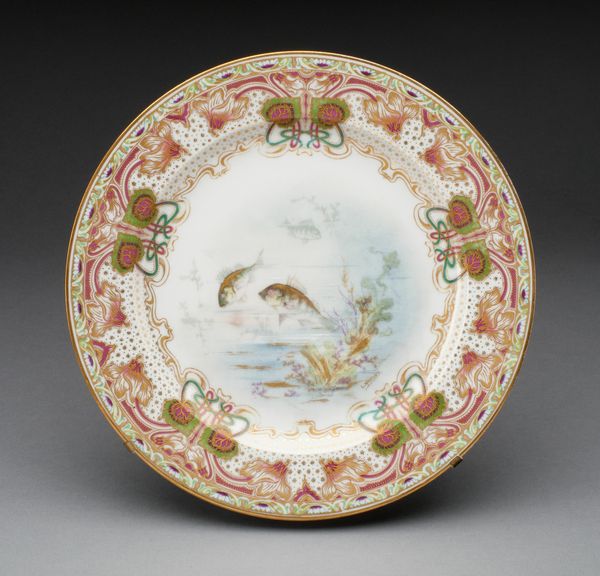
ceramic, porcelain, sculpture
#
ceramic
#
porcelain
#
figuration
#
sculpture
#
genre-painting
#
decorative-art
#
rococo
Dimensions: Diameter: 8 5/8 in. (21.9 cm)
Copyright: Public Domain
Curator: This exquisite porcelain plate was created by the Meissen Manufactory between 1735 and 1745, a prime example of rococo decorative art. What strikes you about it? Editor: Immediately, it's the cherubic scene in the center that draws me in. There's a strange tension, though; these naked children wielding bows seem playful, but also strangely assertive. What’s the cultural context surrounding this? Curator: In this era, such depictions were commonplace, frequently embodying Cupid or representing allegorical figures, evoking ideals of love, innocence, and pastoral simplicity. Notice how these ideas are framed. The ornamental border is not merely decorative; the imagery speaks to a broader concept of curated refinement. Editor: Refinement for whom, though? Porcelain like this spoke to class, exclusivity, and power. These cherubic archers, set against a background of stylized ornamentation, hint at the violent power structures upheld by the elite patrons of Meissen. How can we overlook that in this seemingly innocuous scene? Curator: It is true, that porcelain served as a status symbol and emblem of wealth. Yet the playful cherubs themselves – look closely at their faces, their mischievousness, the way they aim their arrows at that tiny bird–they seem to suggest more universal ideas about growing up and the innocence of childhood that goes by. The archer motif transcends period, reflecting fundamental stages of life across various cultures. Editor: But whose childhood are we talking about? When children in some demographics were actively oppressed by others in that same society, this "universal" vision serves to sanitize an inconvenient historical truth. Don't you think our task now should be to examine the visual grammar here, but more importantly, to confront who benefitted, and who was excluded, by such imagery? Curator: Perhaps. But the symbolism in rococo also carries a strong emotional weight—its aim was to evoke a feeling, a connection to shared humanity, albeit interpreted through a specific lens of its time. I can't help seeing its capacity to promote even today reflection on beauty in its own time and art, rather than focus exclusively on the inherent inequities. Editor: Maybe it is about both and, critically, whose memories get honored. Curator: Precisely. This plate then acts as a small, intricate lens, enabling us to consider layers upon layers, still capable, centuries later, of challenging our assumptions about ourselves.
Comments
No comments
Be the first to comment and join the conversation on the ultimate creative platform.

